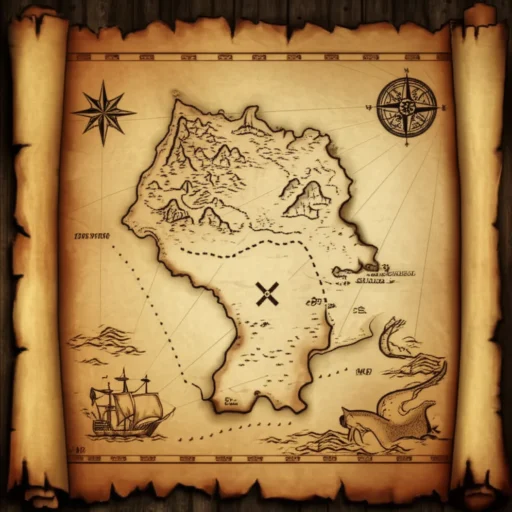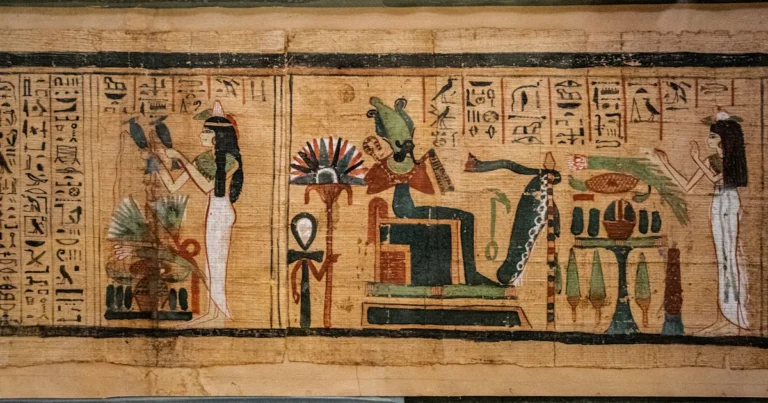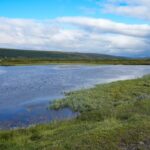Support our educational content for free when you purchase through links on our site. Learn more
The Anasazi Disappearance: 5 Shocking Theories Revealed! 🏜️ (2025)
Imagine standing at the edge of a towering cliff dwelling, the sun setting behind the red rocks, and wondering: Where did the people who built this incredible home go? For centuries, the fate of the Ancestral Puebloans—once called the Anasazi—has puzzled historians, archaeologists, and curious travelers alike. Far from simply vanishing, their story is a gripping saga of survival, migration, and transformation that challenges myths and reveals profound lessons about resilience.
In this article, we unravel five compelling theories behind the so-called “Anasazi disappearance,” backed by cutting-edge science, archaeological discoveries, and rich oral traditions. From devastating droughts to social upheaval, from religious shifts to environmental collapse, we explore the perfect storm that reshaped an entire civilization. Plus, we dive into the living legacy of their descendants and why the term “disappearance” is a misnomer. Ready to uncover the truth behind one of the Southwest’s greatest mysteries? Let’s journey back in time!
Key Takeaways
- The Ancestral Puebloans did not vanish; they migrated and evolved into today’s Pueblo peoples.
- The Great Drought (1276–1299 CE) was a critical environmental trigger for their migration.
- A combination of factors—including climate change, warfare, social unrest, and religious transformation—likely caused the exodus.
- Modern Pueblo tribes preserve the cultural and spiritual legacy of their ancestors.
- The term “Anasazi” is considered problematic; “Ancestral Puebloans” is preferred to honor their living descendants.
Dive deeper to discover the fascinating archaeological evidence, oral histories, and lessons from this ancient civilization’s endurance!
Table of Contents
- ⚡️ Quick Tips and Facts
- Unraveling the Ancestral Puebloan Mystery: A Journey into the Past
- The Great Exodus: What Do We Mean by “Disappearance”? 🤔
- Top Theories Behind the Ancestral Puebloan Departure: A Deep Dive into the Evidence
- 1. The Climate Catastrophe: The Great Drought and Environmental Stress ☀️
- 2. Internal Strife and External Pressures: Conflict and Warfare ⚔️
- 3. Disease and Demographic Shifts: A Silent Killer? 🦠
- 4. Cultural and Religious Transformation: A New Way of Life? ✨
- 5. The “Perfect Storm”: A Confluence of Catastrophes 🌪️
- Beyond the Mystery: The Enduring Legacy of the Ancestral Puebloans
- Dispelling Myths: Why “Anasazi Disappearance” is a Misnomer ❌
- Lessons from the Ancient Ones: Sustainability and Resilience Today 🌱
- Conclusion: The Unfolding Story of the Ancestral Puebloans
- Recommended Links: Explore Further with History Hidden™
- FAQ: Your Burning Questions Answered
- Reference Links: Our Sources and Further Reading
Greetings, fellow history detectives! Welcome to History Hidden™, where we, your expert team of historians, peel back the layers of time to reveal the juicy stories underneath. Today, we’re strapping on our hiking boots and venturing into the sun-drenched canyons of the American Southwest to tackle one of its most enduring riddles: What in the world happened to the Ancestral Puebloans?
You’ve probably heard of them by another name—the “Anasazi.” But as we’ll soon discover, both that name and the idea that they simply “vanished” are wrapped in layers of mystery and misconception. So, grab your canteen, and let’s get digging!
⚡️ Quick Tips and Facts
Before we plunge into the depths of the past, here are some quick takeaways to get you oriented. Think of it as your historical GPS!
- Who? The Ancestral Pueblo people were a sophisticated Native American culture that thrived for over a thousand years in the Four Corners region of the United States (where Arizona, New Mexico, Colorado, and Utah meet).
- What? They are renowned for their incredible architectural achievements, from the massive “Great Houses” of Chaco Canyon to the breathtaking cliff dwellings of Mesa Verde.
- When? Their culture flourished from around 100 CE to 1300 CE. The great migration, or “disappearance,” occurred in the late 13th century.
- Why the name game? The term “Anasazi” is a Navajo word that has been translated as “ancient enemies.” Many modern Pueblo people, who are the descendants of this culture, prefer the term Ancestral Puebloans. We’ll use the latter out of respect, but it’s important to know both terms.
- Did they vanish? ❌ Absolutely not! This is the biggest myth. They didn’t disappear; they migrated and their descendants are the vibrant Pueblo communities of today, including the Hopi, Zuni, and the peoples of the Rio Grande pueblos.
| Quick Facts Table 📜 | |
|---|---|
| Time Period | ~100 CE – 1300 CE |
| Location | Four Corners Region, USA (AZ, NM, CO, UT) |
| Key Sites | Chaco Canyon, Mesa Verde, Canyon de Chelly |
| Known For | Cliff dwellings, Great Houses, Kivas, intricate pottery, road systems |
| Primary Crops | Maize (corn), beans, and squash |
| End Result | Migration and resettlement, not disappearance |
Unraveling the Ancestral Puebloan Mystery: A Journey into the Past
Imagine building a multi-story stone apartment complex, perfectly aligned with the sun and stars, using only hand tools. Now imagine doing it tucked into a sheer cliff face hundreds of feet off the ground. Sounds incredible, right? Well, for the Ancestral Puebloans, this was just another day at the office. But who were these master builders, and what was their world like before the great migration?
Who Were the Ancestral Puebloans? Builders of the Ancient Southwest 🏜️
For centuries, these resourceful people thrived in the high desert. They were expert farmers who developed sophisticated irrigation and terracing techniques to grow crops in an arid land. They were artists, creating stunning black-on-white pottery that is still prized today. And they were astronomers, building structures that served as celestial calendars.
Their society wasn’t a single, unified empire but rather a collection of distinct cultural groups and communities spread across a vast landscape. As one archaeological overview notes, the term “Anasazi” is a recognized “root” in the classification of Southwestern cultures, with distinct branches like Kayenta, Chaco, and Mesa Verde. This diversity is key to understanding their story.
Their Golden Age: Flourishing Cultures and Architectural Marvels 🏛️
Between 900 and 1150 CE, the culture reached its zenith, particularly in Chaco Canyon, New Mexico. This wasn’t just a village; it was a massive cultural center. The “Great Houses” like Pueblo Bonito were enormous, multi-story structures with hundreds of rooms, some of which were the largest buildings in North America until the 19th century!
A network of wide, straight roads, some 30 feet across, radiated from Chaco for hundreds of miles. For a society without wheeled vehicles or draft animals, this is mind-boggling! It points to a complex system of trade, pilgrimage, and communication that connected communities across the region.
The Great Exodus: What Do We Mean by “Disappearance”? 🤔
Here’s where the story gets its mysterious reputation. Around the late 1200s, the Ancestral Puebloans began to leave these magnificent settlements. Within a single generation, thriving centers like those in Mesa Verde and Chaco Canyon were abandoned. They left behind pottery, tools, and sealed granaries, as if they intended to return. But they never did.
So, what happened? It wasn’t an alien abduction or a mystical rapture. It was a migration. A massive, region-wide reorganization of people moving to new homes. The real question isn’t if they disappeared, but why they left.
When Did the Ancestral Puebloans Leave Their Homes? ⏳
The timeline is surprisingly precise, thanks to the science of dendrochronology (tree-ring dating). The data points to a critical period between 1276 and 1299 CE. During these 23 years, a devastating, prolonged drought gripped the Southwest. This event, now known as the Great Drought, appears to be the primary trigger for the exodus.
Where Did They Go? Tracing the Migration Routes 🗺️
The people moved south and east, seeking more reliable water sources like the Rio Grande and the Little Colorado River. Archaeological evidence and oral traditions connect them directly to modern Pueblo peoples. The Hopi, Zuni, Acoma, and the various Rio Grande Pueblos all trace their ancestry back to these ancient cultural centers. The story of their “disappearance” is really the story of their survival and transformation.
Top Theories Behind the Ancestral Puebloan Departure: A Deep Dive into the Evidence
So, a drought pushed them out. Case closed, right? Not so fast! While the Great Drought was a massive catalyst, most historians and archaeologists now believe it was part of a “perfect storm” of factors. Let’s break down the leading theories.
1. The Climate Catastrophe: The Great Drought and Environmental Stress ☀️
This is the heavyweight champion of theories. For a society so dependent on agriculture, a decades-long drought would have been catastrophic.
Evidence from Tree Rings and Paleoclimate Data 🌳
Tree rings from this period are incredibly narrow, showing years of minimal growth due to lack of water. This data confirms that the drought from 1276-1299 was one of the most severe in the region’s history, leading to repeated crop failures and dwindling food supplies.
Resource Depletion: Over-Farming and Deforestation 🌲
Generations of farming, combined with the need for timber to build the massive Great Houses, had already put a strain on the environment. Archaeologists studying ancient pack rat middens (yes, really!) found that the people of Chaco Canyon had to travel up to 70 miles to harvest large timbers. This deforestation would have led to soil erosion and made the land even more vulnerable when the rains stopped.
2. Internal Strife and External Pressures: Conflict and Warfare ⚔️
When resources become scarce, conflict often follows. There is mounting evidence that the late 1200s were a violent time.
Archaeological Signs of Violence and Fortification 🛡️
Many later settlements were built in highly defensive positions, like the cliff dwellings at Mesa Verde. Archaeologists have found burned villages and the unburied remains of people who met violent ends. At a site called Castle Rock in Colorado, evidence points to a massacre, and some researchers have even found disturbing signs of cannibalism, possibly as a result of starvation or warfare.
The Role of Social Unrest and Political Instability 📉
The environmental crisis likely shattered the social and religious order. The leaders and priests, whose rituals were meant to ensure rain and good harvests, would have lost their authority when the rituals failed. This could have led to a breakdown of their complex society, causing people to abandon the centralized system of places like Chaco Canyon and break into smaller, more mobile groups.
3. Disease and Demographic Shifts: A Silent Killer? 🦠
While harder to prove in the archaeological record, malnutrition from crop failures would have made the population much more susceptible to disease. A widespread epidemic could have swept through the densely populated pueblos, adding another layer to the crisis. Furthermore, high population densities before the drought would have made the subsequent collapse even more severe.
4. Cultural and Religious Transformation: A New Way of Life? ✨
Some scholars suggest the migration was also tied to a profound religious shift. Around this time, a new religious ideology, the Kachina belief system, began to emerge. As seen in the rock art of the Jornada Mogollon people to the south, this new belief system may have offered a new social framework that pulled people away from the old ceremonial centers. This transformation of belief could have been as much of a “pull” factor as the drought was a “push.” You can explore more about such belief systems in our Mythology Stories section.
5. The “Perfect Storm”: A Confluence of Catastrophes 🌪️
✅ This is the most likely scenario. It wasn’t just one thing. Imagine a society already straining its environment, with a growing population and underlying social tensions. Now, hit them with a 23-year, crop-destroying drought. The result is a domino effect: Drought ➡️ Famine ➡️ Conflict ➡️ Religious/Political Collapse ➡️ Migration. This combination of factors, rather than a single cause, best explains the great exodus of the 13th century.
Beyond the Mystery: The Enduring Legacy of the Ancestral Puebloans
The story doesn’t end with empty cliff dwellings. The real magic is in understanding that these people survived, adapted, and thrive today.
The Living Descendants: Modern Pueblo Peoples and Their Stories 🗣️
The descendants of the Ancestral Puebloans are the proud members of the modern Pueblo tribes in Arizona and New Mexico. Their languages, traditions, and ceremonies carry the echoes of their ancestors. For them, sites like Chaco Canyon and Mesa Verde are not abandoned ruins; they are sacred ancestral homelands.
Oral Traditions: Echoes from the Past 📜
Oral histories passed down through generations are a vital, and often overlooked, source of information. While many Pueblo histories of the migration are closely guarded, they speak of their ancestors’ journeys.
Interestingly, the neighboring Diné (Navajo) people have their own powerful oral traditions about this period. As explained in the perspective shared in the featured video, some Navajo oral histories tell a very different story. They describe the leaders of some Great Houses not as revered ancestors, but as an oppressive ruling class, referred to as “Anasazi,” who enslaved other peoples, including the ancestors of some Navajo clans. In this tradition, Chaco Canyon is remembered as “the place of crying,” and its abandonment was a result of divine intervention that destroyed the oppressors and liberated the enslaved. This perspective challenges the standard archaeological narrative and adds a crucial layer of complexity, reminding us that the past is always viewed through different lenses. Delve deeper into these kinds of narratives in our Folklore and Legends collection.
Protecting the Past: Preserving Chaco Canyon, Mesa Verde, and Other Sacred Sites 🏞️
Today, these incredible places are protected as National Parks and UNESCO World Heritage Sites, like Chaco Culture National Historical Park and Mesa Verde National Park. Visiting them is a powerful experience, but it’s crucial to do so with respect for their cultural significance. These aren’t just archaeological sites; they are living history.
Dispelling Myths: Why “Anasazi Disappearance” is a Misnomer ❌
Let’s circle back to the two big misconceptions.
- They did not “disappear.” They migrated, reorganized, and transformed. Their culture continued, and their descendants are the Pueblo people of today. The narrative of a “vanished civilization” is a romanticized myth.
- The term “Anasazi” is problematic. As we’ve learned, it’s a Navajo word often translated as “ancient enemy.” While it’s entrenched in older archaeological literature, the preferred term is Ancestral Puebloan, which acknowledges their direct connection to modern Pueblo people.
Lessons from the Ancient Ones: Sustainability and Resilience Today 🌱
The story of the Ancestral Puebloans is more than just a fascinating historical puzzle; it’s a cautionary tale. Their struggles with climate change, resource depletion, and social stress are incredibly relevant today. They show us how fragile even the most sophisticated societies can be in the face of environmental catastrophe.
But their story is also one of incredible resilience. They faced a crisis that shattered their world, yet they endured. They adapted, moved, and built new communities that have survived for over 700 years since the great migration. Their legacy is a testament to human adaptability and the enduring power of culture.
Conclusion: The Unfolding Story of the Ancestral Puebloans
What a journey! From towering cliff dwellings to sprawling Great Houses, from the mystery of a sudden migration to the vibrant Pueblo cultures alive today, the story of the Ancestral Puebloans is anything but a simple disappearance. Instead, it’s a saga of adaptation, resilience, and transformation.
The “vanishing” was not a vanishing at all—it was a strategic migration triggered by a perfect storm of environmental stress, social upheaval, and cultural change. The Great Drought dealt a harsh blow, but the Ancestral Puebloans responded with remarkable flexibility, moving to new lands and evolving their ways of life. Their descendants carry forward their legacy in language, ceremony, and community.
So, next time you hear the phrase “Anasazi disappearance,” remember: it’s a story of survival, not extinction. And it’s a story still being told—through archaeology, oral traditions, and the living voices of Pueblo peoples.
Recommended Links: Explore Further with History Hidden™
Hungry for more? Dive deeper into the mystery and marvels of the Ancestral Puebloans with these excellent resources and books:
-
House of Rain: Tracking a Vanished Civilization Across The American Southwest by Craig Childs
Amazon | Barnes & Noble -
The Chaco Handbook: An Encyclopedic Guide by R. Gwinn Vivian and Bruce Hilpert
Amazon -
Mesa Verde National Park Official Site – Explore the cliff dwellings and history firsthand
NPS Mesa Verde -
Chaco Culture National Historical Park Official Site – Discover the Great Houses and road systems
NPS Chaco Canyon
FAQ: Your Burning Questions Answered
What can be learned from the Ancestral Puebloan migration in terms of sustainable living and environmental stewardship?
The Ancestral Puebloans teach us that environmental balance is crucial. Their sophisticated farming and water management techniques worked well for centuries, but overuse of resources combined with climate change led to collapse. Their story warns modern societies about the dangers of overexploitation and the importance of adapting to environmental changes proactively.
How did the Ancestral Puebloans adapt to their harsh desert environment before their migration?
They developed innovative farming techniques like dry farming, irrigation, and terracing to maximize scarce water. Their architecture used natural features for insulation and climate control, such as building cliff dwellings that stayed cool in summer and warm in winter. Their extensive trade networks brought in goods and ideas that helped sustain their communities.
Are there any remaining Ancestral Puebloan ruins or artifacts that can be visited today?
✅ Absolutely! Sites like Mesa Verde National Park, Chaco Culture National Historical Park, and Canyon de Chelly preserve some of the most spectacular ruins. Visitors can explore cliff dwellings, Great Houses, kivas, and rock art. These sites are protected and offer guided tours to deepen understanding.
What role did climate change play in the migration of the Ancestral Puebloans?
Climate change, particularly the Great Drought from 1276 to 1299 CE, was a critical factor. Tree-ring data shows this was one of the most severe droughts in centuries, causing crop failures and water shortages. This environmental stress was likely the tipping point that forced communities to abandon their homes.
Did the Ancestral Puebloans migrate to other areas or were they completely wiped out?
They migrated rather than vanished. Archaeological and oral histories link them to modern Pueblo peoples in New Mexico and Arizona. Their descendants continue many cultural traditions, languages, and ceremonies, demonstrating a continuous cultural lineage.
What were the social and environmental factors that led to the migration?
A combination of factors:
- Environmental: Prolonged drought, resource depletion, deforestation, soil erosion.
- Social: Increased conflict and warfare, political instability, religious upheaval.
- Demographic: Population pressures and possible disease outbreaks.
Together, these created a crisis that made migration the best survival strategy.
How did the Ancestral Puebloan civilization contribute to modern Native American culture?
Their descendants—the Hopi, Zuni, Acoma, and Rio Grande Pueblos—carry forward many cultural elements: pottery styles, agricultural practices, religious ceremonies (like the Kachina dances), and social organization. Their architectural and artistic legacies continue to inspire.
What are the main theories behind the Ancestral Puebloan migration?
- Climate-induced drought and environmental degradation
- Social conflict and warfare
- Disease and demographic stress
- Religious and cultural transformation
- A combination of all above factors (the “perfect storm”)
How did the Ancestral Puebloan society collapse?
Rather than a sudden collapse, it was a gradual unraveling. Environmental stress undermined agriculture, leading to food shortages. Social and political systems weakened, conflicts increased, and religious authority declined. Communities dispersed, seeking more hospitable areas.
Reference Links: Our Sources and Further Reading
- NPR: Tracking a Vanished Civilization in the Southwest
- Loveland Archaeological Society: The Mystery of the Anasazi
- Gambler’s House Blog: Prehistoric Southwestern Cultures More Mysterious than the Vanishing Anasazi
- National Park Service: Chaco Culture National Historical Park
- National Park Service: Mesa Verde National Park
- History Hidden™ Categories: Folklore and Legends | Mythology Stories
We hope this deep dive into the Ancestral Puebloans has sparked your curiosity and respect for these incredible ancestors. Their story is a reminder that history is never just about the past—it’s a mirror reflecting our present and guiding our future. Stay curious, history lovers! 🔍✨





